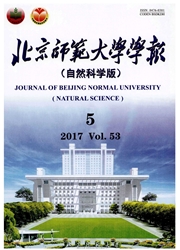

 中文摘要:
中文摘要:
[目的]研究不同土地利用方式下的生物量季节动态。[方法]于2008年生长季(5~10月)期间,分别测量了针茅群落、羊草群落和农田3个不同地表覆盖状况下的植物地上生物量和地下生物量。[结果]地上生物量均在8月份达到最高值,羊草、针茅和农田的地上生物量分别为287.91、117.05、193.59g/m2;3个样地植物根系总生物量在7月份最高,针茅、羊草和农田样地分别为1683.9、1601.9、513.9g/m2;植物上层根系0~15cm/植物下层根系15~30cm的生物量比率最大的是羊草,针茅次之,农田最小。[结论]该研究为生态脆弱地区的生态环境保护提供了理论依据。
 英文摘要:
英文摘要:
[Objective] The aim was to study seasonal dynamics of biomass under different land use patterns. [Methed] Aboveground biomass and underground biomass of plants under 3 different surface cover conditions of Stipa krylovii, Leymus chinensis and farmland were determined in growing season ( from May to October) of 2008. [ Result ] The aboveground biomass of Stipa krylovii, Leymus chinensis and farmland in August all reached the highest value, which of Stipa krylovii, Leymus chinensis and farmland was 287.91,117.05 and 193.59 g/m2, respectively. The total biomass of plant roots of the 3 plots in July all reached the highest value, which of Stipa krylovii, Leymus chinensis and farmland was 1 683.9, 1 601.9 and 513.9 g/m2, respectively. Leymus chinensis had the biggest biomass ratio of upper plant roots (0 - 15 cm) to lower plant roots (15 -30 cm), Stipa krylovii took second place, and farmland had the smallest one. ~ Conclusion The research provides theoretical basis for the ecological environment protection of ecological fragile area.
 同期刊论文项目
同期刊论文项目
 同项目期刊论文
同项目期刊论文
 期刊信息
期刊信息
